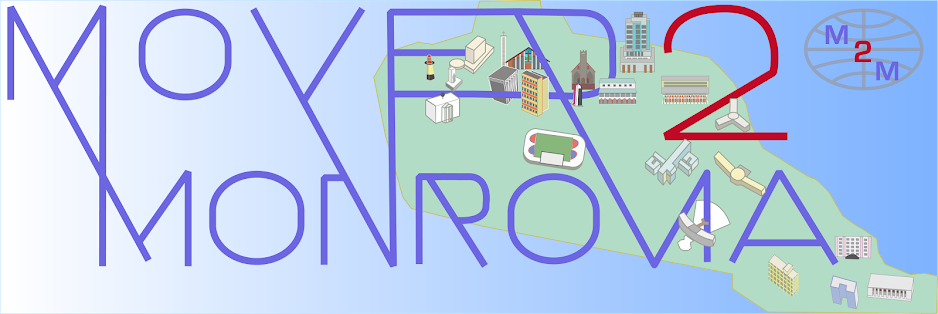The report below describes a very official-sounding meeting, in which a plan for a 4000-acre city was presented with plans and specifics to an audience including several relevant government ministries and agencies. The presentation was given by ECB Jones, a long-time high-ranking bureaucrat in the Ministry of Lands, Mines and Energy. Although not named as such, this is likely the "New Monrovia" plan which has been in development by ECB Jones and partners for years.
From a May 2012 Public Agenda article, speculating on this latest development:
In the case of President Ellen Johnson Sirleaf when she spoke about relocating the country’s city to Zekepah in Nimba, her five ‘Ws’ and one ‘H’ were truly correct – the who were lawmakers, partners and citizens; where=Zekepah; what=relocating city; when=not defined; why=necessary against climate change and how=not defined. But in any case, the pronouncement was made and hopes were high. Fifteen months later, Nimba lawmaker Tingban suspected the pronouncement was a mere mockery intended to win votes from Nimba. Then two months later,this paper has gathered credible information that instead of Zekepah, Duazon in Margibi seems to be Liberia’s new capital city. Was the lawmaker right that the President was making mockery of her citizens?
It appears that the Liberian Government is undecided about the exact place or county to relocate the country’s political capital city, which has been a major issue of national debate from regime to regime. Although the name of Bong County has been in the ears of many, probably due to its central location, latest development coming from government circle suggests otherwise. This paper has gathered credible information that plans are already far advanced for Liberia's capital city to be relocated around Duazon in Margibi County, instead Zekepah in Nimba as was pronounced by President Ellen Johnson-Sirleaf on Monday, January 24, 2011, when she addressed for the 6th and last time the 52nd National Legislature during her first term.
But seventeen (17) months after that pronouncement at a special called meeting over the weekend in Duanzon, Mamba Kaba District, eminent citizens of Margibi, including Senior Senator Clarice Jah and Representative Ballah Zayzay among others presented and reviewed an initial blueprint of the planned capital city through a Powerpoint presentation by DU Investment Incorporated.
According to initial information available, the Liberian government has earmarked 40,000 acres of land for its new capital city; though the weekend presentation elaborated on an initial 25,000 acres.
During the presentation, the Managing Director of DU Investment, Inc., Mr. E.C.B Jones, showed citizens designs and layout of the proposed city, including roads, train tracks, ministries and agencies of government.
While government does not intend to build all 40,000 acres with infrastructure, our information says it intends to build and relocate all government ministries and agencies there so as to attract investment and habitation; thereby erasing the hope of relocating the city to Zekepah.
A train track, according to the presentation, will be built from the Robert's International Airport (RIA) to Juanzon and then to Monrovia. In the same blueprint, present-day Monrovia is referred to as Greater Monrovia when the city is relocated to Duanzon.
The meeting was attended by representatives from the Ministry of Lands, Mines and Energy, National Housing Authority, Environmental Protection Agency (EPA) and the Land Commission.
This discovery comes at a time when Nimba County District #9 lawmaker Richard Matoneky Tingban has sounded a caveat; fearing and hoping that earlier public pronouncement by President Ellen Johnson-Sirleaf to relocate the country's capital to Zekepah in his county was not a mockery only intended to win votes from Nimba.
Rep. Tingban, an Engineer by profession, said though he did not have reasons to think that the President's promise was a mockery, reminding her about public pronouncements helps nation building and truth telling.
The Nimba lawmaker said he and other Liberians would feel very disappointed if the President had only made the pronouncement to win votes from Nimba during the 2011 presidential election.
A 2008 LISGIS census report put the county as the second most populated area in Liberia. Now that discovery shows that plans are already far advanced to relocate the country's city to Margibi, much is unpredictable.
The comment comes fifteen months after a pronouncement by President to the nation that her government had selected Zekepah, at the meeting between Nimba, Bong and Grand Bassa counties, as Liberia's next capital city.






























